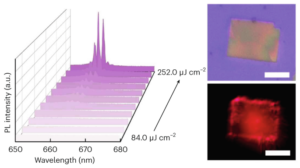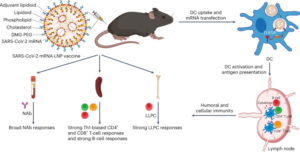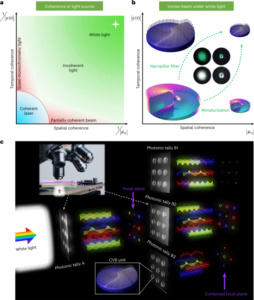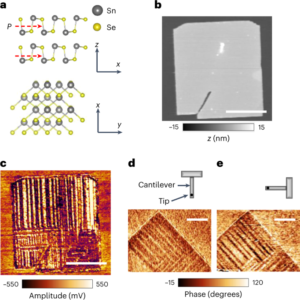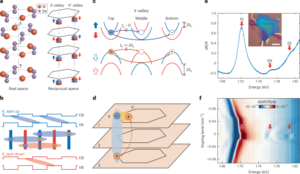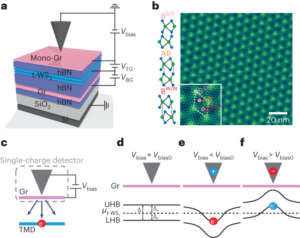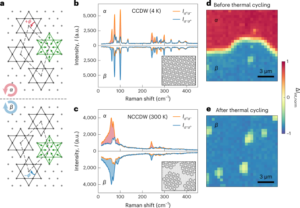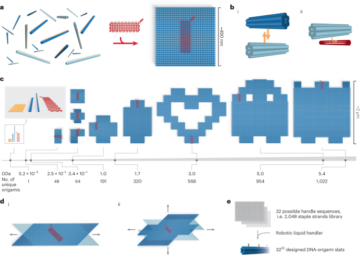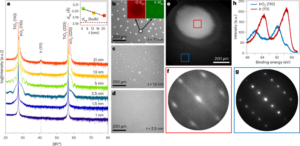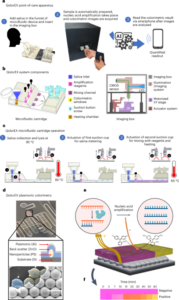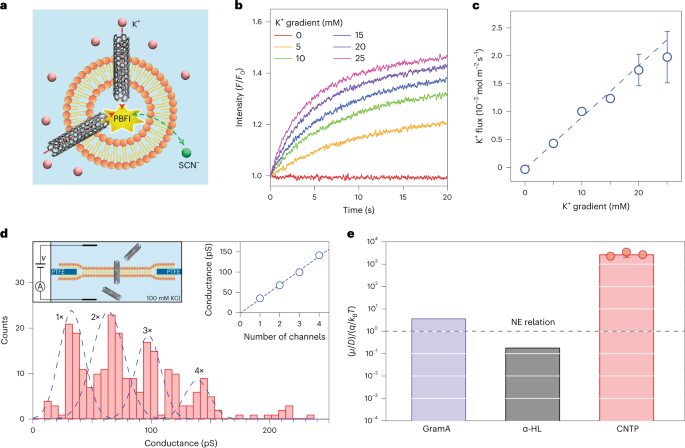
Nernst, W. Zur kinetik der in lösung befindlichen körper (On the kinetics of bodies in solution). Zeit Phys. Chem. 2, 613–637 (1888).
Einstein, A. Über die von der molekularkinetischen Theorie der Wärme geforderte Bewegung von in ruhenden Flüssigkeiten suspendierten Teilchen (On the motion of small particels suspended in liquids at rest required by the molecular-kinetic theory of heat). Ann. Phys. 4, 549–560 (1905).
Plawsky, J. L. in Transport Phenomena Fundamentals 4th edn (eds Heinemann, H. & Speight, J. G.) Ch. 3 (CRC Press, 2020).
Weiss, T. F. Cellular Biophysics: Volume 1: Transport (MIT Press, 1996).
Kirby, B. J. in Micro- and Nanoscale Fluid Mechanics: Transport in Microfluidic Devices Ch. 11 (Cambridge Univ. Press, 2010).
Faucher, S. et al. Critical knowledge gaps in mass transport through single-digit nanopores: a review and perspective. J. Phys. Chem. C 123, 21309–21326 (2019).
Daiguji, H., Yang, P. & Majumdar, A. Ion transport in nanofluidic channels. Nano Lett. 4, 137–142 (2004).
Lee, C. et al. Large apparent electric size of solid-state nanopores due to spatially extended surface conduction. Nano Lett. 12, 4037–4044 (2012).
Lin, C.-Y., Combs, C., Su, Y.-S., Yeh, L.-H. & Siwy, Z. S. Rectification of concentration polarization in mesopores leads to high conductance ionic diodes and high performance osmotic power. J. Am. Chem. Soc. 141, 3691–3698 (2019).
Dechadilok, P. & Deen, W. M. Hindrance factors for diffusion and convection in pores. Ind. Eng. Chem. Res. 45, 6953–6959 (2006).
Renkin, E. M. Filtration, diffusion, and molecular sieving through porous cellulose membranes. J. Gen. Physiol. 38, 225–243 (1954).
Cheng, C. et al. Ion transport in complex layered graphene-based membranes with tuneable interlayer spacing. Sci. Adv. 2, e1501272 (2016).
Bason, S., Kaufman, Y. & Freger, V. Analysis of ion transport in nanofiltration using phenomenological coefficients and structural characteristics. J. Phys. Chem. B 114, 3510–3517 (2010).
Wu, J., Gerstandt, K., Zhang, H., Liu, J. & Hinds, B. J. Electrophoretically induced aqueous flow through single-walled carbon nanotube membranes. Nat. Nanotechnol. 7, 133–139 (2012).
Choi, W. et al. Diameter-dependent ion transport through the interior of isolated single-walled carbon nanotubes. Nat. Commun. 4, 2397 (2013).
Fornasiero, F. et al. Ion exclusion by sub-2-nm carbon nanotube pores. Proc. Natl Acad. Sci. USA 105, 17250–17255 (2008).
Esfandiar, A. et al. Size effect in ion transport through angstrom-scale slits. Science 358, 511–513 (2017).
Pang, P., He, J., Park, J. H., Krstić, P. S. & Lindsay, S. Origin of giant ionic currents in carbon nanotube channels. ACS Nano 5, 7277–7283 (2011).
Tunuguntla, R. H. et al. Enhanced water permeability and tunable ion selectivity in subnanometer carbon nanotube porins. Science 357, 792–796 (2017).
Venema, K., Gibrat, R., Grouzis, J.-P. & Grignon, C. Quantitative measurement of cationic fluxes, selectivity and membrane potential using liposomes multilabelled with fluorescent probes. Biochim. Biophys. Acta Biomembr. 1146, 87–96 (1993).
Lokesh, M., Youn, S. K. & Park, H. G. Osmotic transport across surface functionalized carbon nanotube membrane. Nano Lett. 18, 6679–6685 (2018).
Yao, Y.-C. et al. Strong electroosmotic coupling dominates ion conductance of 1.5 nm diameter carbon nanotube porins. ACS Nano 13, 12851–12859 (2019).
Li, Z. et al. Strong differential monovalent anion selectivity in narrow diameter carbon nanotube porins. ACS Nano 14, 6269–6275 (2020).
Haynes, W. M., Lide, D. R. & Bruno, T. J. (eds) CRC Handbook of Chemistry and Physics 97th edn, 75–76 (CRC Press, 2016).
Nightingale, E. Jr Phenomenological theory of ion solvation. Effective radii of hydrated ions. J. Phys. Chem. 63, 1381–1387 (1959).
Misra, R. P. & Blankschtein, D. Insights on the role of many-body polarization effects in the wetting of graphitic surfaces by water. J. Phys. Chem. C 121, 28166–28179 (2017).
Misra, R. P. & Blankschtein, D. Uncovering a universal molecular mechanism of salt ion adsorption at solid/water interfaces. Langmuir 37, 722–733 (2021).
Lamoureux, G. & Roux, B. Modeling induced polarization with classical Drude oscillators: theory and molecular dynamics simulation algorithm. J. Chem. Phys. 119, 3025–3039 (2003).
Hummer, G., Rasaiah, J. C. & Noworyta, J. P. Water conduction through the hydrophobic channel of a carbon nanotube. Nature 414, 188–190 (2001).
Corry, B. Designing carbon nanotube membranes for efficient water desalination. J. Phys. Chem. B 112, 1427–1434 (2008).
Corry, B. Water and ion transport through functionalised carbon nanotubes: implications for desalination technology. Energy Environ. Sci. 4, 751–759 (2011).
Mondal, S. & Bagchi, B. Water in carbon nanotubes: pronounced anisotropy in dielectric dispersion and its microscopic origin. J. Phys. Chem. Lett. 10, 6287–6292 (2019).
Loche, P., Ayaz, C., Schlaich, A., Uematsu, Y. & Netz, R. R. Giant axial dielectric response in water-filled nanotubes and effective electrostatic ion–ion interactions from a tensorial dielectric model. J. Phys. Chem. B 123, 10850–10857 (2019).
Secchi, E., Niguès, A., Jubin, L., Siria, A. & Bocquet, L. Scaling behavior for ionic transport and its fluctuations in individual carbon nanotubes. Phys. Rev. Lett. 116, 154501 (2016).
Biesheuvel, P. & Bazant, M. Analysis of ionic conductance of carbon nanotubes. Phys. Rev. E 94, 050601 (2016).
Chipot, C. & Comer, J. Subdiffusion in membrane permeation of small molecules. Sci. Rep. 6, 35913 (2016).
Metzler, R. & Klafter, J. The random walk’s guide to anomalous diffusion: a fractional dynamics approach. Phys. Rep. 339, 1–77 (2000).
Taylor, G. I. Disintegration of water drops in an electric field. Proc. R. Soc. Ser. A 280, 383–397 (1964).
Gao, X., Zhao, T. & Li, Z. Fluid breakup in carbon nanotubes: an explanation of ultrafast ion transport. Phys. Fluids 29, 092003 (2017).
Chen, X. & Gross, R. W. Potassium flux through gramicidin ion channels is augmented in vesicles comprising plasmenylcholine: correlations between gramicidin conformation and function in chemically distinct host bilayer matrixes. Biochemistry 34, 7356–7364 (1995).
Andersen, O. S. Ion movement through gramicidin A channels. Single-channel measurements at very high potentials. Biophys. J. 41, 119–133 (1983).
Hemmler, R., Böse, G., Wagner, R. & Peters, R. Nanopore unitary permeability measured by electrochemical and optical single transporter recording. Biophys. J. 88, 4000–4007 (2005).
Menestrina, G. Ionic channels formed by Staphylococcus aureus alpha-toxin: voltage-dependent inhibition by divalent and trivalent cations. J. Membr. Biol. 90, 177–190 (1986).
Tunuguntla, R. H., Escalada, A., Frolov, V. A. & Noy, A. Synthesis, lipid membrane incorporation, and ion permeability testing of carbon nanotube porins. Nat. Protoc. 11, 2029–2047 (2016).
Tunuguntla, R. H., Allen, F. I., Kim, K., Belliveau, A. & Noy, A. Ultrafast proton transport in sub-1-nm diameter carbon nanotube porins. Nat. Nanotechnol. 11, 639–644 (2016).
Jezek, P., Mahdi, F. & Garlid, K. Reconstitution of the beef heart and rat liver mitochondrial K+/H+ (Na+/H+) antiporter. Quantitation of K+ transport with the novel fluorescent probe, PBFI. J. Biol. Chem. 265, 10522–10526 (1990).
Wanunu, M. et al. Rapid electronic detection of probe-specific microRNAs using thin nanopore sensors. Nat. Nanotechnol. 5, 807–814 (2010).
Vanommeslaeghe, K. et al. CHARMM general force field: a force field for drug‐like molecules compatible with the CHARMM all‐atom additive biological force fields. J. Comp. Chem. 31, 671–690 (2010).
Plimpton, S. Fast parallel algorithms for short-range molecular dynamics. J. Comp. Phys. 117, 1–19 (1995).
Dequidt, A., Devemy, J. & Padua, A. A. Thermalized Drude oscillators with the LAMMPS molecular dynamics simulator. J. Chem. Inf. Model 56, 260–268 (2016).
Kučerka, N. et al. Lipid bilayer structure determined by the simultaneous analysis of neutron and X-ray scattering data. Biophys. J. 95, 2356–2367 (2008).
Grossfield, A. WHAM: The Weighted Histogram Analysis Method Version 2.0.1 (University of Rochester,2021); http://membrane.urmc.rochester.edu/wordpress/?page_id=126
Bonthuis, D. J. et al. Theory and simulations of water flow through carbon nanotubes: prospects and pitfalls. J. Phys. Cond. Matter 23, 184110 (2011).
Vaitheeswaran, S., Rasaiah, J. C. & Hummer, G. Electric field and temperature effects on water in the narrow nonpolar pores of carbon nanotubes. J. Chem. Phys. 121, 7955–7965 (2004).
Shafiei, M., von Domaros, M., Bratko, D. & Luzar, A. Anisotropic structure and dynamics of water under static electric fields. J. Chem. Phys. 150, 074505 (2019).
- SEO Powered Content & PR Distribution. Get Amplified Today.
- Platoblockchain. Web3 Metaverse Intelligence. Knowledge Amplified. Access Here.
- Source: https://www.nature.com/articles/s41565-022-01276-0
- 1
- 10
- 11
- 116
- 1996
- 2001
- 2011
- 2012
- 2016
- 2017
- 2018
- 2019
- 202
- 2020
- 2021
- 28
- 39
- 7
- 9
- a
- across
- algorithm
- algorithms
- analysis
- and
- apparent
- approach
- article
- augmented
- Beef
- between
- Breakdown
- Bruno
- cambridge
- carbon
- carbon nanotubes
- Channel
- channels
- characteristics
- chemistry
- COMP
- compatible
- complex
- concentration
- CRC
- critical
- data
- designing
- Detection
- determined
- Die
- distinct
- dominates
- Drops
- dynamics
- effect
- Effective
- effects
- efficient
- Electric
- Electronic
- enhanced
- Ether (ETH)
- explanation
- factors
- FAST
- field
- Fields
- flow
- fluctuations
- FLUX
- Force
- formed
- fractional
- from
- function
- Gen
- General
- giant
- gross
- guide
- Heart
- High
- hindrance
- host
- HTTPS
- implications
- in
- individual
- insights
- interactions
- interfaces
- interior
- Ionic
- isolated
- Kim
- knowledge
- large
- layered
- Leads
- LINK
- Liver
- Mass
- measurements
- mechanics
- mechanism
- method
- MIT
- model
- modeling
- molecular
- motion
- movement
- nanopore
- Nature
- novel
- Origin
- Parallel
- Park
- performance
- perspective
- plato
- Plato Data Intelligence
- PlatoData
- potential
- power
- press
- probe
- prospects
- quantitative
- random
- rapid
- RAT
- recording
- relation
- required
- response
- REST
- review
- Role
- salt
- scaling
- SCI
- sensors
- simulation
- simulator
- single
- Size
- small
- solution
- strong
- structural
- structure
- Surface
- suspended
- Technology
- Testing
- The
- Through
- to
- transport
- under
- Universal
- university
- version
- von
- W
- Water
- X
- x-ray
- zephyrnet
- Zhao

